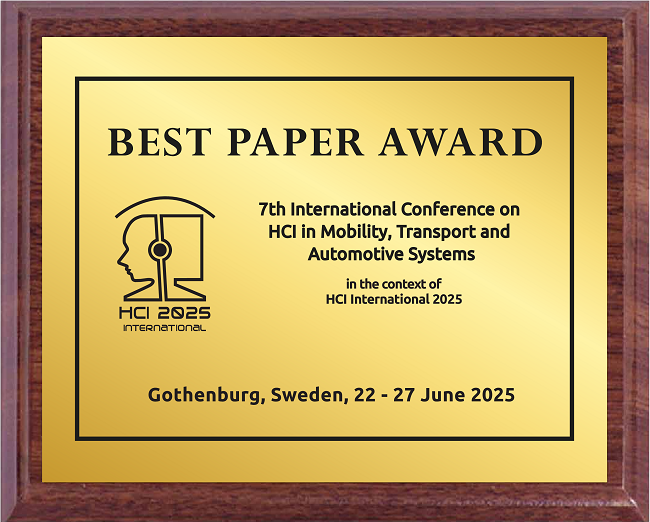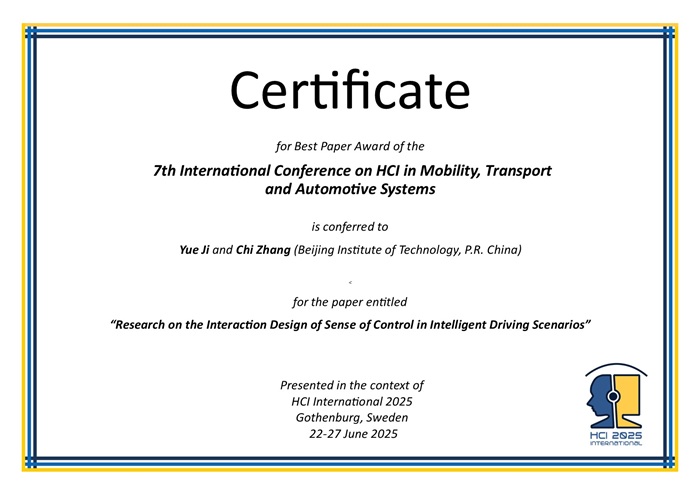The Best Paper Award of the 7th International Conference on HCI in Mobility, Transport and Automotive Systems
has been conferred to
Yue Ji and Chi Zhang, (Beijing Institute of Technology, P.R. China)
for the paper entitled
"Research on the Interaction Design of Sense of Control in Intelligent Driving Scenarios"

Yue Ji
(presenter)

Best Paper Award for the 7th International Conference on HCI in Mobility, Transport and Automotive Systems, in the context of HCI International 2025, Gothenburg, Sweden, 22 - 27 June 2025

Certificate for Best Paper Award of the 7th International Conference on HCI in Mobility, Transport and Automotive Systems presented in the context of HCI International 2025, Gothenburg, Sweden, 22 - 27 June 2025
Paper Abstract
Intelligent driving technology holds the potential to create a smarter, safer, and more efficient transportation system, with its acceptance being a key factor in determining whether it can benefit a broader population. Through a comprehensive analysis of the Technology Acceptance Model (TAM) and its related extensions, it is clear that “sense of control” is a common element across several theoretical models. Moreover, with the advancement of autonomous driving technology, the role of human drivers is gradually shifting from “active operators” to “passive monitors.” This shift in driving control is one of the key barriers to building trust and acceptance of autonomous driving systems among human drivers. This paper focuses on the field of intelligent vehicles and, from the perspectives of “mental models” and “system transparency,” develops theoretical hypotheses regarding the impact on the driver’s sense of control. Through an in-depth exploration, it was found that the effects of mental models and system transparency on the driver’s sense of control vary across different driving scenarios. Specifically, in subjective risky driving situations, when the mental model of the intelligent driving system aligns with that of the driver, it positively influences the driver’s sense of control, while system transparency does not significantly impact the driver’s sense of control. In contrast, in objective risky driving situations, system transparency has a significant effect on the driver’s sense of control. These findings offer new insights for the human-machine interaction design of intelligent driving vehicles.
The full paper is available through SpringerLink, provided that you have proper access rights.


